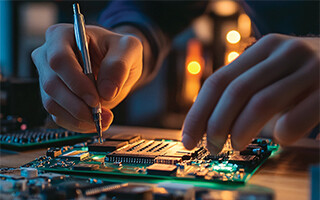Build vs. buy when it comes to the IoT
January 25, 2016

The Internet of Things (IoT) is such an exciting revolution, one that's set to change products, business models, workflows, industries, and life as we...
The Internet of Things (IoT) is such an exciting revolution, one that’s set to change products, business models, workflows, industries, and life as we know it. In such times, it’s not unusual for businesses to assemble an internal team made up of its smartest folks to evaluate how they’ll participate or understand how it could disrupt their business.
One group in particular that walks this path is the product manufacturers and those that are keen on creating connected versions of their products. Every manufacturer wants to ensure his product can get connected to the Internet and that his end-user customers can interact with the products via a mobile-friendly application.
These organizations are quickly finding out that this is not a trivial task and that it requires new knowledge and expertise, especially as it needs to scale across product volume and portfolio. Let us evaluate a number of the challenges.
Network protocol: This is how devices will connect to the cloud. Organizations need to make a decision around which standard to adopt and support. The IoT’s value is about collaboration among devices, so this decision can’t be made in a silo for just your products. It must be done in the context of the ecosystem your device will exist in for the foreseeable future.
Network security: This remains a key area for the IoT, and organizations that choose to build connected products must understand that security needs to extend beyond physical access out to the digital access.
Cloud infrastructure: This goes beyond just buying storage in the cloud. The always-on behavior of connected devices require a different type of architecture and design.
Development cycle: Next generation connected devices are set to take advantage of the latest embedded chipsets which contain new features and capabilities. The result gets businesses up to speed and passed the learning curve. Reference designs and kits by MCU partners will help speed up the process.
The graphic guideline of pros and cons provides further details for organizations to consider in their decision making of building an in-house solution or buying IoT cloud services.

Adebayo Onigbanjo is the Director of Marketing for Zebra Technologies’ New Growth Platforms Team. He’s responsible for bringing advanced Internet of Things solutions to customers through its Zatar platform. Onigbanjo has 15+ years of experience in product and solutions marketing in telecommunication, AIDC, locationing, mobile, and the IoT.





